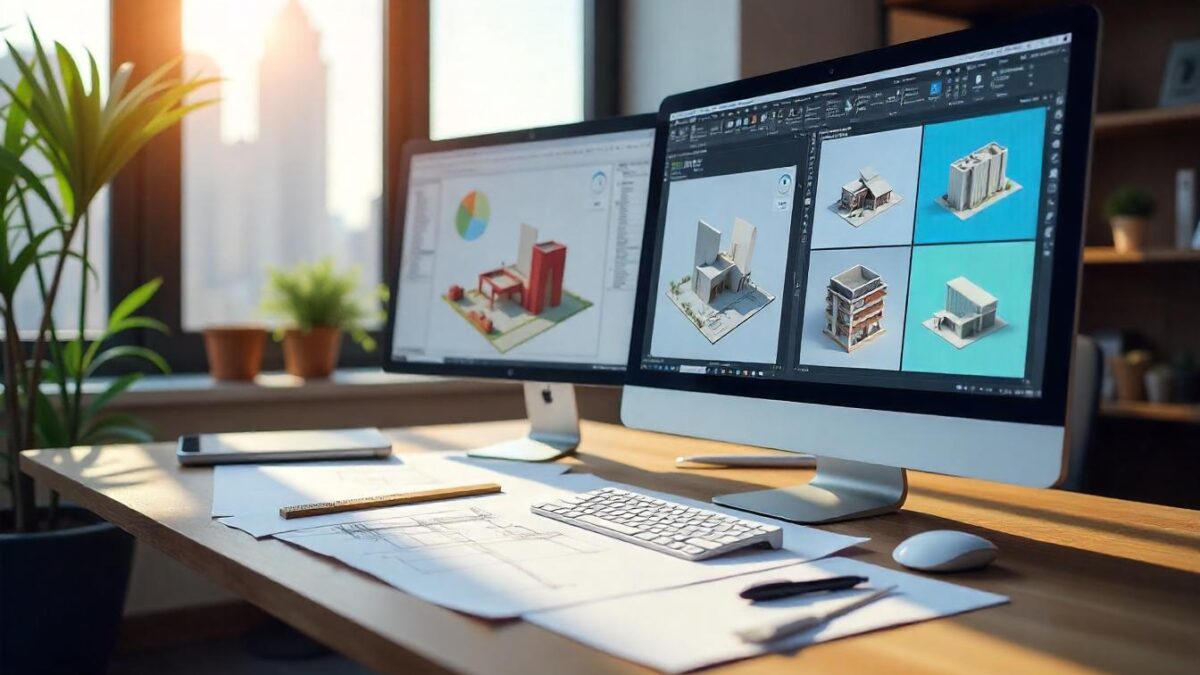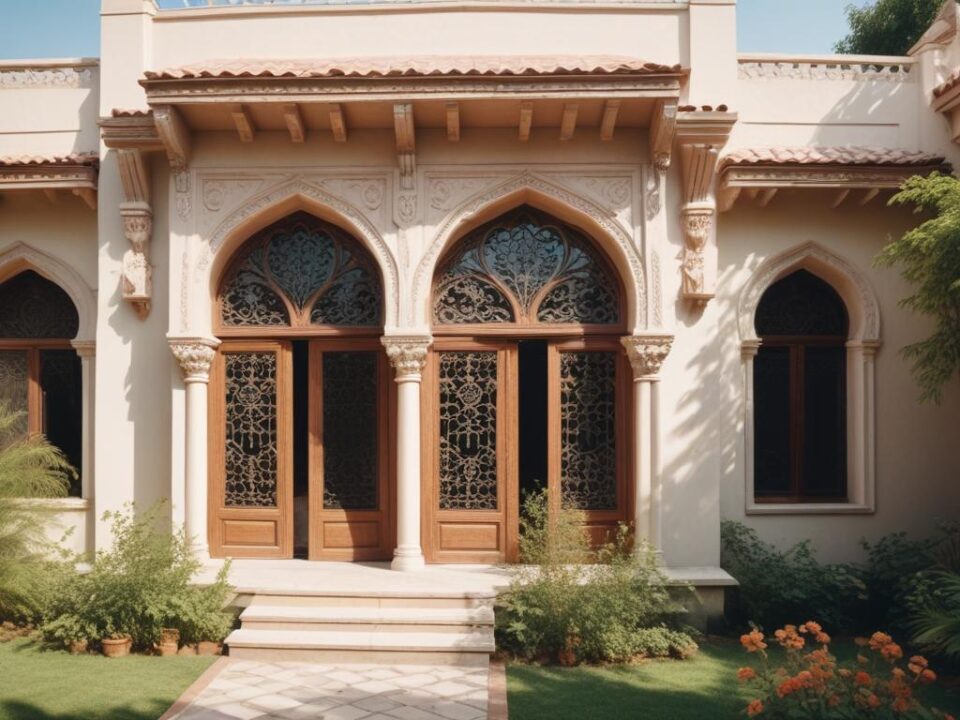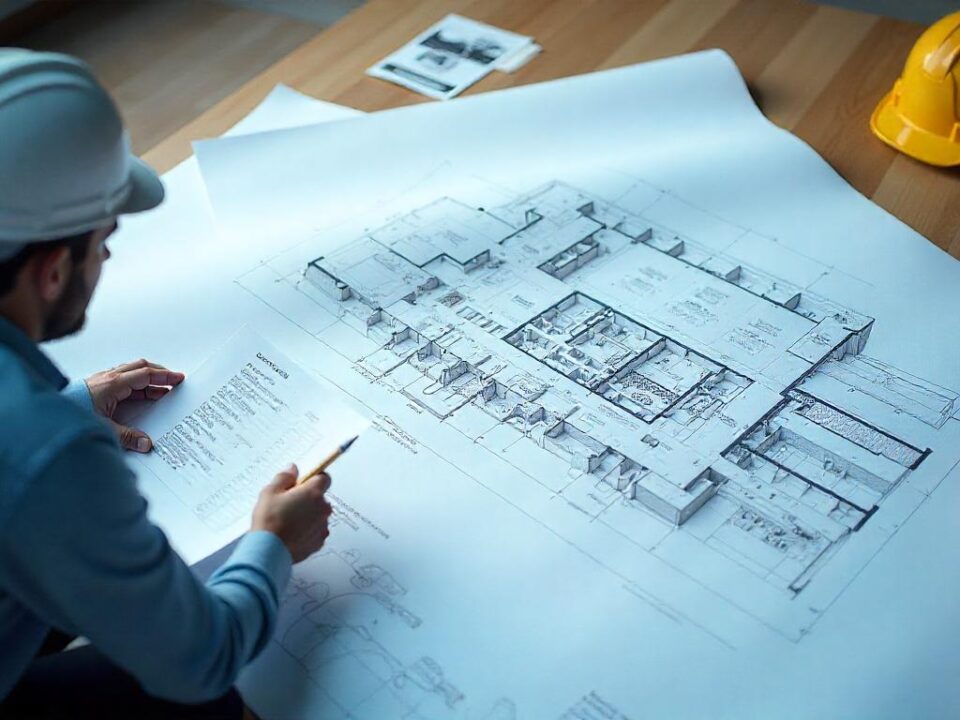
Why 3D Architecture Design is Changing the Way We Build Homes
October 7, 2024
How Much Does An Architect Make?
October 7, 2024When you see a beautifully designed building or home, it’s easy to admire the creativity and vision behind it. But behind every great architectural project, there’s advanced software that helps architects turn their ideas into reality. So, what software do architects use to create those stunning designs?
In today’s digital age, architects rely on various tools to draft, model, and visualize buildings, from homes to skyscrapers. Let’s explore some of the most popular and powerful software that architects use to make their visions come to life.
1. AutoCAD
AutoCAD is one of the oldest and most well-known tools in architecture. Developed by Autodesk, it’s primarily used for creating 2D drawings, but it also supports 3D modeling. Architects often use AutoCAD to draft blueprints, floor plans, and technical drawings with precision. If you’re just starting out or working on smaller projects, AutoCAD is a great tool to master.
2. Revit
Revit, also developed by Autodesk, is a game-changer for architects working on larger projects. It’s a Building Information Modeling (BIM) software that helps architects design, plan, and manage buildings in a 3D environment. Unlike traditional 2D drawings, Revit creates intelligent 3D models where all the components are connected. This means any change you make in one part of the model updates across the entire project, reducing errors and saving time.
3. SketchUp
Known for its user-friendly interface, SketchUp is a popular choice for architects who want to quickly create 3D models of their designs. It’s an intuitive tool, making it great for everything from initial design concepts to fully realized models. SketchUp is also widely used for interior design and landscape architecture, allowing architects to experiment with different layouts and styles before finalizing a project.
4. 3ds Max
3ds Max is a powerful 3D modeling and rendering software often used by architects to create photorealistic images of their designs. If you’ve ever seen those lifelike renderings of buildings that look almost like photographs, they were likely created using software like 3ds Max. It’s particularly useful for visualizing lighting, materials, and textures, giving clients a clear picture of what their finished space will look like.
5. Rhino
For architects working on complex and freeform structures, Rhino is an excellent choice. This software is known for its ability to handle intricate, organic shapes that are hard to create with traditional tools. Rhino is often used for architectural designs that push the boundaries of what’s possible, from futuristic buildings to innovative art installations.
6. ArchiCAD
ArchiCAD is another BIM software that’s widely used in the architecture world. Like Revit, it allows architects to create 3D models of buildings, but it’s known for being especially intuitive and user-friendly. ArchiCAD is a favorite among architects who value efficiency, as it streamlines the design process and improves collaboration between team members.
7. Lumion
Lumion is a 3D rendering software that architects use to bring their designs to life with stunning visuals. With Lumion, you can create realistic environments, complete with lifelike lighting, textures, and even animated elements like people and trees. It’s perfect for presenting your designs to clients in a way that makes them feel like they’re walking through their future space.
8. Blender
Although Blender is more commonly associated with animation and gaming, it’s also a powerful tool for architects who need advanced 3D modeling capabilities. The best part? Blender is open-source and free! Many architects use it for detailed modeling, especially when working on projects with tight budgets or for creating quick visualizations of a concept.
9. V-Ray
V-Ray is a rendering software that works as a plugin for programs like SketchUp and Rhino. Architects use V-Ray to add lifelike textures and lighting to their 3D models. The result is stunning, photorealistic images that make it easy to communicate your design to clients, builders, and other stakeholders.
Conclusion
In the world of architecture, having the right tools can make all the difference. From drafting blueprints to creating detailed 3D models, the software architects use is essential for transforming ideas into reality. Whether you’re just starting out or managing complex projects, tools like AutoCAD, Revit, and SketchUp are essential to every architect’s toolkit.
So, next time you admire a beautifully designed building, remember the incredible software that helped bring that vision to life!





